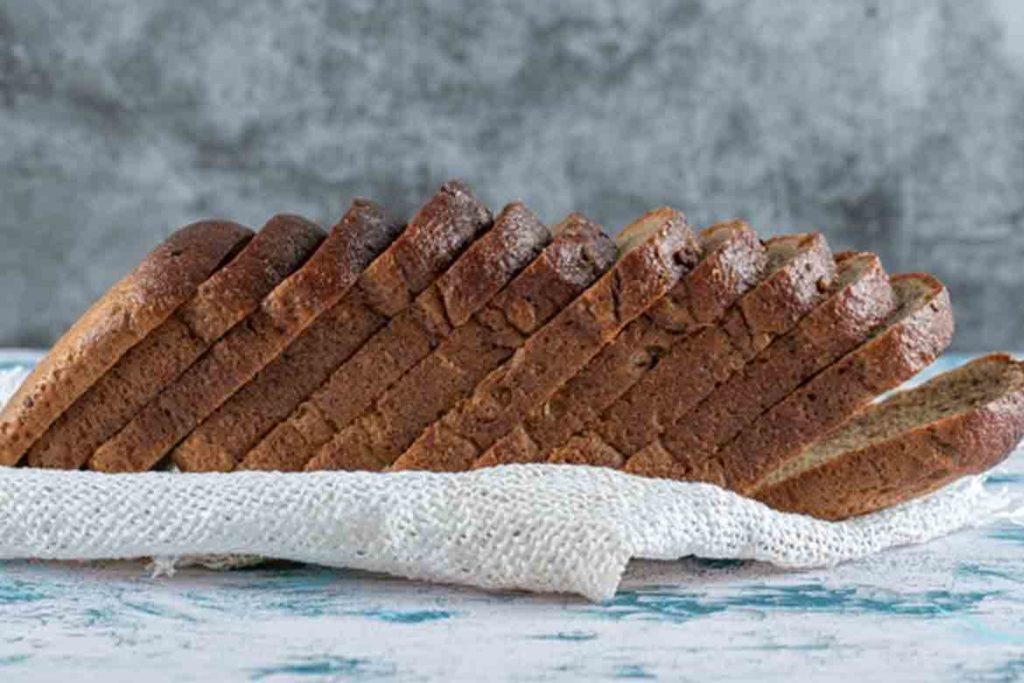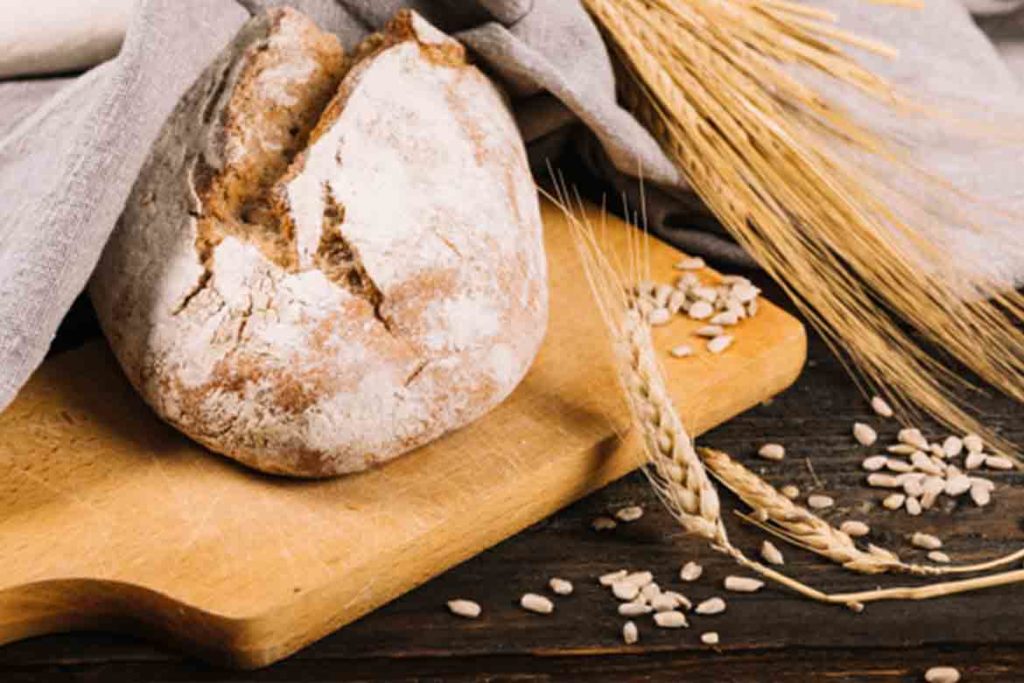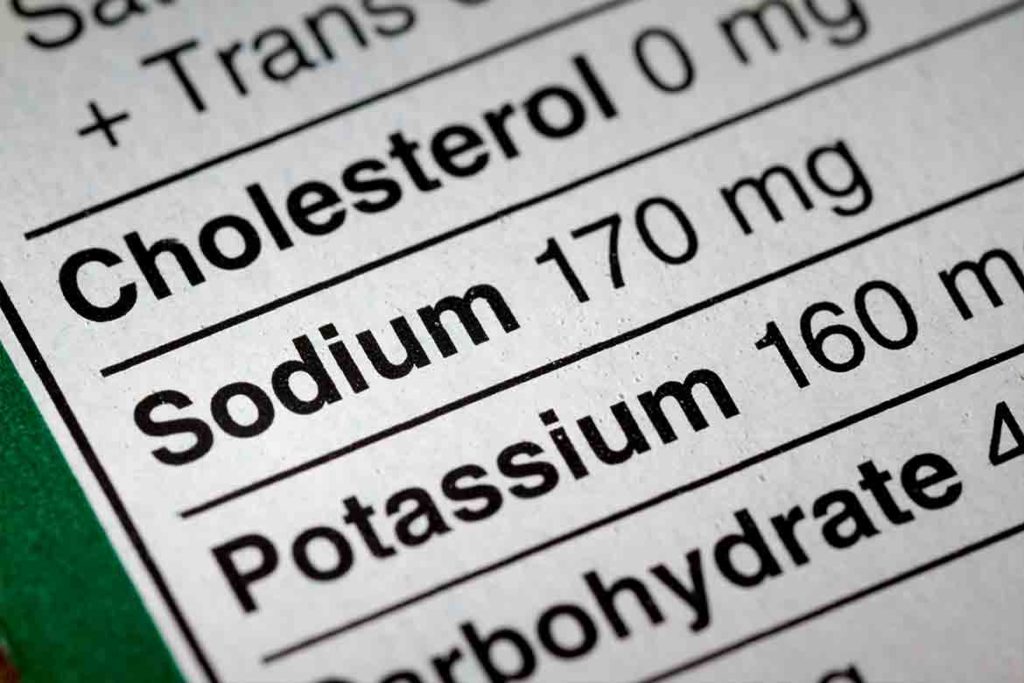When bread is labeled as “multigrain,” it means that it is made of multiple types of grains. Once browsing through the bread aisle, you will encounter 7-grain, 9-grain, and even 12-grain bread. However, do not be duped by sensible marketing. Additional grains do not mean that it is healthier or maybe Multigrain. Scan the fine print and certify that those grains are Multigrains which the bread has. A bread must have only three grams of fiber per slice. Some firms market their bread as multigrain. However, these include various refined or processed grains that do not provide you with abundant fiber. Thus, these don’t possess any nutritional profit over white bread. This is something you need to look out for.
So, whole wheat and multigrain bread could appear to be similar. However, these do have some minor variations. Whole wheat bread is considered healthier than multigrain bread. Multigrain is a sensible bread possibility, but you need to ensure that you do not make it a permanent addition to your diet. In whole wheat bread, the full wheat gets used up, and therefore the nutrients stay intact. Moreover, it contains full grains and helpful nutrients like vitamins, iron, zinc, copper, manganese, and magnesium.
White, brown, multigrain, and each different variety of bread is delicious when consumed within a sandwich with several veggies as filling. Moreover, you will be able to additionally create bread poha by putting pieces of bread together with some veggies. Despite being a healthy food, you need to restrict its consumption as advised by your specialist. Restrictions can also be due to other underlying medical conditions.
Whole-Wheat Bread
The same deal goes for whole wheat bread. You need to scan the label to create a positive made of Multigrain. Some bread manufacturers can label a bread as “wheat bread”. However, they could solely use a part of the grain to create the bread. Explore the words “100% whole wheat” within the ingredient list and certify that the fiber is up to par.

Bread has been a part of the staple diet in most communities since years. Many of us even replace chapati in our meal for our love for bread. There is a good variety of choices out there within the market to select the correct bread for yourself. However, whenever we talk about bread, whole wheat and multigrain breads are necessary topics of discussion. Although the health advantages are somewhat similar to some extent, each of these bread’s nutritional values differ on many counts.
Whole wheat bread advantages
The necessary ingredient in whole wheat bread is Fiber. It has advanced carbohydrates that digest slowly, keeping you full for an extended period of time. Doctors and Nutritionists often advise this for people who have diabetes and to people on a weight loss journey. Whole wheat encompasses a host of nutrients like Vitamin-B & E and minerals like copper, potassium, iodine. Here are the health advantages of whole wheat bread:
Reduces the danger of heart disease
Multigrains promote heart health. It lowers the danger of stroke. Whole wheat bread helps in reducing the danger of heart diseases. In line with medical studies, ingestion of other Multigrains has been interlinked with any upset and coronary cardiopathy interference. These say that Multi grain bread help in dealing with these ailments.
High fiber content
The high fiber content in whole wheat bread will contribute to weight loss, digestion and reduce glucose levels. Whole wheat bread in your diet could be a great way to spice up a healthy style.
Decreases the danger of cancer
It’s not refined grains but largely Multigrains that play a significant role in decreasing the danger of cancer. Additionally, wheat helps in dealing with it naturally, particularly in the case of bowel cancer. Thus, doctors advise Cancer patients to go for whole wheat bread. The reason is its high fiber content.
People only have to completely give up bread, if suffering from serious medical conditions. Otherwise, it is a secure and nutritious food that provides several health advantages. Whole wheat bread is packed with advanced carbohydrates and encompasses a vital fiber quantity.
Therefore, it is the flexibility to stay fuller for a protracted time. It contains zero fat. However, it has added sugars present in it. Unless you have got a wheat allergic reaction, whole wheat bread does not leave any adverse effects on the body.
Notable Advantages of Multigrain Bread

In this bread loaf, all the grains are not Multigrain and might be refined. Multigrain Bread adds additional texture and flavor to your piece of bread. The calorie count could be very little more than/over whole wheat bread. However, it is loaded with essential nutrients and is an incredibly supplier of carbohydrates. Here are the health advantages of multigrain bread :
Suitable for diabetics
Like oats, every kind of millet has a high fiber content that makes it recommendable to reduce blood sugar. Millets have low GI as compared to different grains. These grains are a gift in an exceedingly multigrain bread, thus creating decent food for people with diabetes. However, its consumption ought to be controlled, and as per your tending skilled as excess multigrain bread is harmful.
Lowers the danger of fleshiness
Although the calorie count in multigrain bread is just little over whole wheat bread, it still reduces the danger of fleshiness. The high quantity of fiber helps keep you full for an extended time. It majorly helps in especially reducing belly fat. You can have multigrain bread in moderation if you’re on a weight loss journey.
Enhances digestion
This type of bread is especially helpful for your digestive system. It contains massive amounts of dietary fiber, soluble and insoluble, that prevents several gastrointestinal conditions. You will be able to embody this bread in your diet moderately to enhance digestion.
Wheat Bread vs Multigrain Bread
Wheat is one among many alternative forms of grains want to bake bread. However, wheat comes in several forms, based on the degree that it is processed. Some labels can say “whole wheat” or “Multigrain,” which have a special meaning.
In different words, it contains all three elements of the grain (the bran, germ, and endosperm) within the same proportions as the ones it had while on the field. However, the foremost necessary issue to see for once shopping for bread, or any grain-based food for that matter, is that the word “whole”. Wheat bread vs. breadstuff is not essentially a healthier possibility. However, once you compare, the word “whole” means that it is a healthier possibility.
Check of The Nutrition Facts Label and Variations
When investigating wheat bread vs. multigrain bread, a check of the nutrition facts label can show that Multigrain or grain bread has additional fiber and infrequently additional fat and protein. It even consists of the outer bran. This is the part of a wheat grain where you will find healthy fats and fiber. Therefore, the inner germ has additional protein. Using the full-grain adds additional vitamins, iron, and different health-promoting antioxidants.

The U.S.D.A lists one regular slice of grain bread as having ninety-one calories, four grams of protein, one gram of fat, fifteen grams of carbohydrates, and a couple of grams of fiber. On the other hand, regular white wheat bread has seventy-five calories, two grams of protein, but one gram of fat, fourteen grams of carbs, and fewer than one gram of fiber per slice.
Health Advantages of Multigrains
There is enough research and data on the health advantages of Multi-grain/grain bread and White bread. Besides the fact that refined grains are lower in fiber and plenty of necessary nutrients, they additionally tend to possess a lower glycemic index. High glycemic index foods means there’s a magnified risk of metabolic diseases, particularly insulin resistance and diabetes.
Researchers found that people who eat additional Multigrains are healthier overall. They incline to possess fewer chronic diseases, healthier weights, less depression. This benefits their family and social lives as well. Thus, Multigrain Bread ensures physical and mental well being.
What to See for in A Healthy Grain-based Food Product
When buying a healthy grain-based food product, you would like to start with the food label. Certify which Multigrains or whole wheat are highest on the list. Check for buzz words like “enriched” or “bleached” because these are indicators of a sub-par product. This means this product contains these ingredients. Additionally, it may also probably contain artificial additives like flavors, colors, and preservatives.
Opt for a whole-grain product containing a minimum of four grams of fiber per serving to help you deliver the goods your 25-gram daily dietary fiber goal. Check and ensure that the merchandise doesn’t contain an excessive amount of sodium or high levels of side sugar. Aim for fewer than 200 mg of sodium and underneath 2 grams of sugar per serving. Relying on what reasonably product you are shopping for then you will additionally need to visualize the fat content and limit your intake of fats.
Grains are a staple part of our diet as they offer helpful nutrients and vitamins, minerals, and dietary fiber. However, you need to be conscious of faulty brand promotions and know how to spot the healthy product from the rest. Opt for multigrain and whole-grain products whenever you can. Such a step will be the smartest one.
In the end, this minor food choice will benefit not just you, but also people around you.
Get More Nutrition and Health Updates
